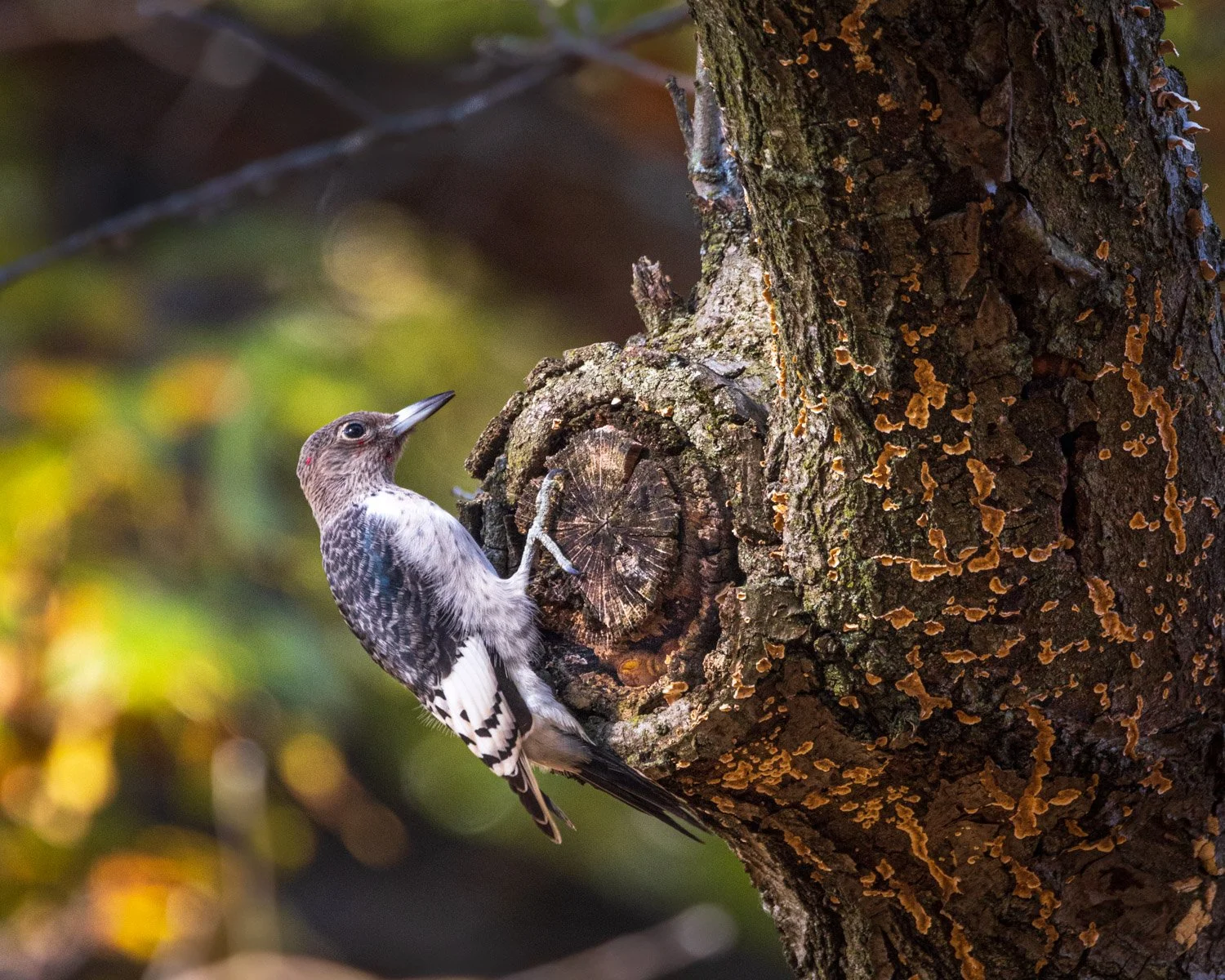It’s been far too long since I’ve done a post on birds. However, I’ve got a trip planned to focus on some flying feathers. Before we get to that, I’ve been capturing some birds close to home with a new long lens I’m having some fun learning to use. Let’s start with a couple little ones from St. James Farm Forest Preserve in Winfield.
House Finch
This House Finch was singing away on top of the pine. Several Chickadees were flitting through the shrubs gathering seeds, and were a challenge to capture.
Black-capped Chickadee
I was in the back yard watching a Red-tailed Hawk flying overhead. Then it began pursuing a flock of pigeons, so I went in the house to grab my camera. The chase lasted a bit, but I couldn’t get any images. Then another hawk came, and the two tumbled about in the air.
Red-tailed Hawks
I had the urge to get some more bird images then, so it was time to drive to a nearby forest preserve to see what might be around. As it turned out, I got no images there. But with the long lens next to me, just a couple blocks from home a Red-tailed Hawk was sitting in a parkway having lunch. Could it have been the same hawk that was flying overhead just a little while ago?
Those who might be sensitive to a raptor enjoying its prey should scroll past the next two images of the possum and the hawk.
Red-tailed Hawk and possum
A couple weeks ago, I posted a story about a hike on the Paul Douglas trail at Indiana Dunes National Park. Just as with my first hike there last winter, the beginning of the trail is loaded with woodpeckers. I’ve never seen so many concentrated in one place, including several Red-headed Woodpeckers.
Red-Headed Woodpecker
The birds were very busy packing nuts and seeds into crevasses in the trees to get ready for winter. I think the fellow in the next image is a juvenile. You can see one tiny blotch of red starting to feather out on his head. If you look carefully, you can see some of the nuts that he was very busy plugging into the tree.
Seed storing
As I was driving away from the Cowles Bog trail at the Dunes, a pair of Sandhill Cranes were feeding in the marsh. Usually by this time of year, I’ve heard the cranes flying south, but I haven’t heard any so far. However, in a couple weeks, I expect to see thousands of them. I’ll be heading to Bosque del Apache Wildlife Refuge in New Mexico, where I went once before in 2009. Tens of thousands of Cranes, Snow Geese and Ross’ Geese spend the winter there along the Rio Grande. One of the greatest wildlife scenes I’ve experienced is the “blast off” of the geese around sunrise. As the sky begins to light up, the cranes and geese begin to call and honk. Some mornings small groups will take off, but most days something triggers the whole flock to suddenly take flight off to the surrounding fields. The rush of wings swirling overhead is breathtaking.
Local Bosque del Apache groups run a Festival of Cranes the weekend before Thanksgiving, but as last year, it is a remote event. You can attend some of the classes Friday and Saturday if interested. Or you can peek into their live Facebook feed Saturday morning for the fly off—and hopefully blast off—or the sunset return when they fly back to the pond where they spend the night. The morning feed is from 6:45 to 8 a.m. CST. The birds don’t tell you ahead of time when they’ll take off, but usually it’s about 10 minutes before or after sunrise. The evening fly-in spreads out through the evening and the live Facebook feed will from 5:30 to 6:45 p.m. CST. The cranes seem to be calling the entire time. Can’t wait to get there in a couple weeks!
Indiana Dunes National Park, Sandhill Cranes







